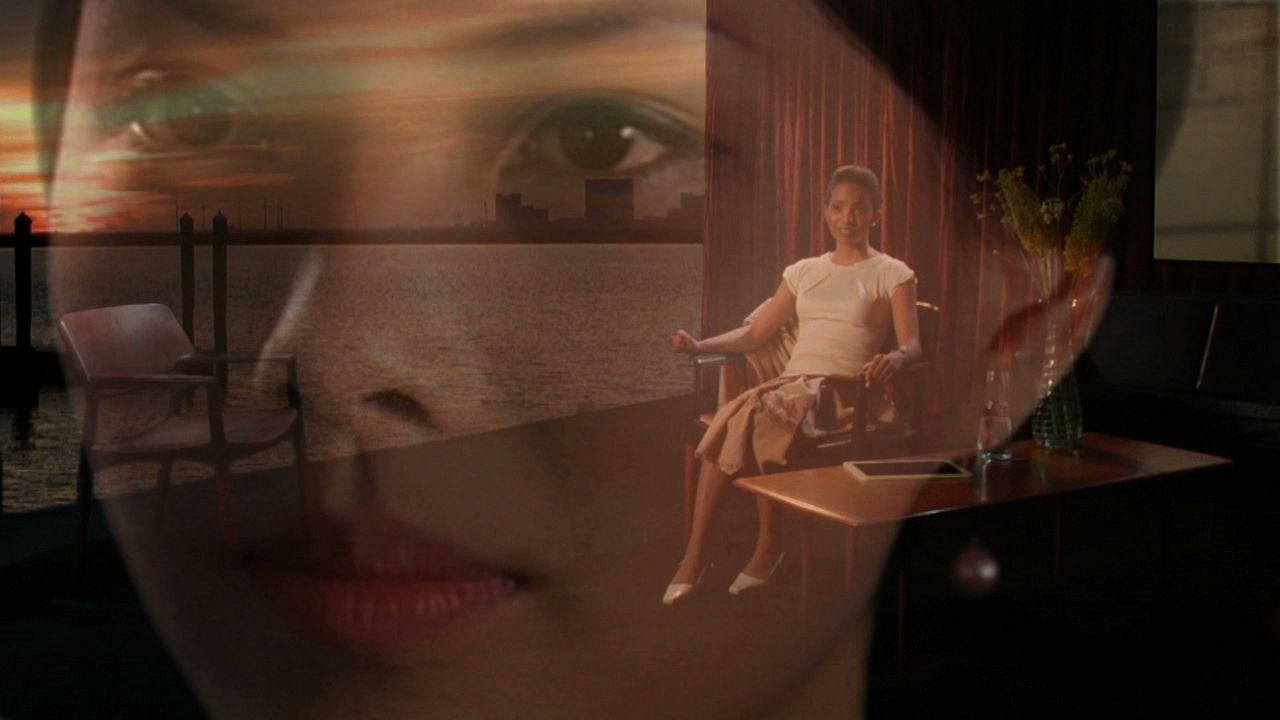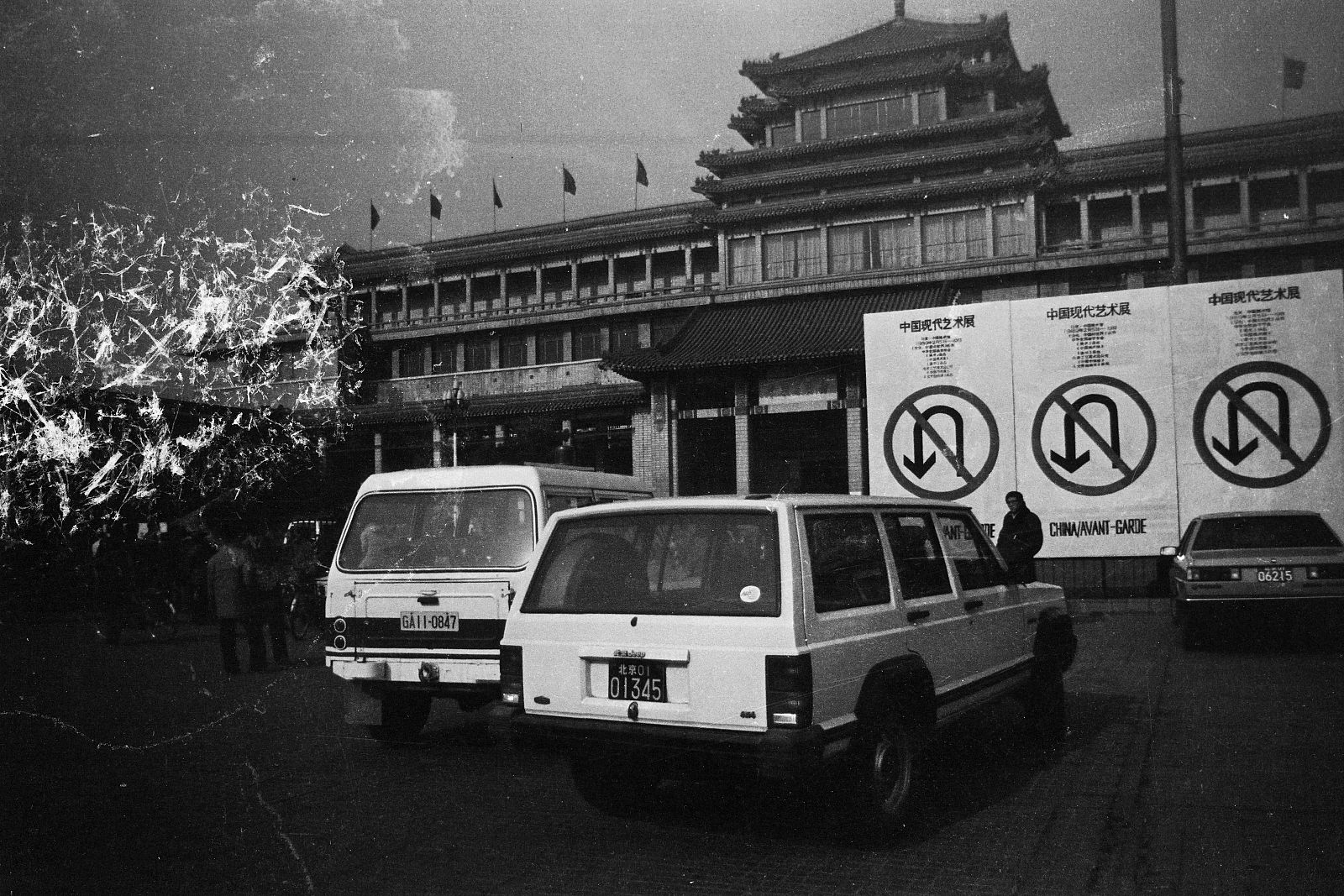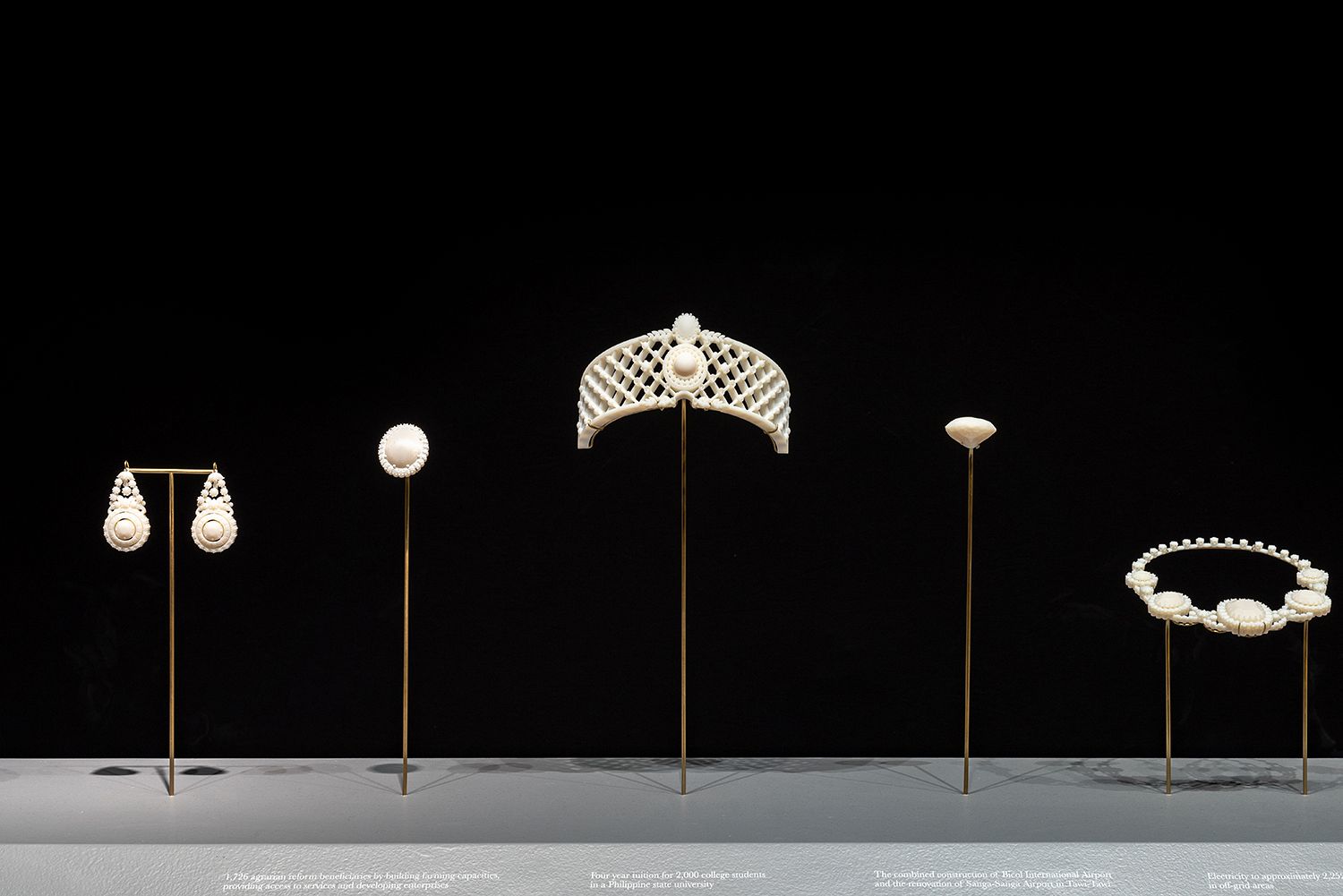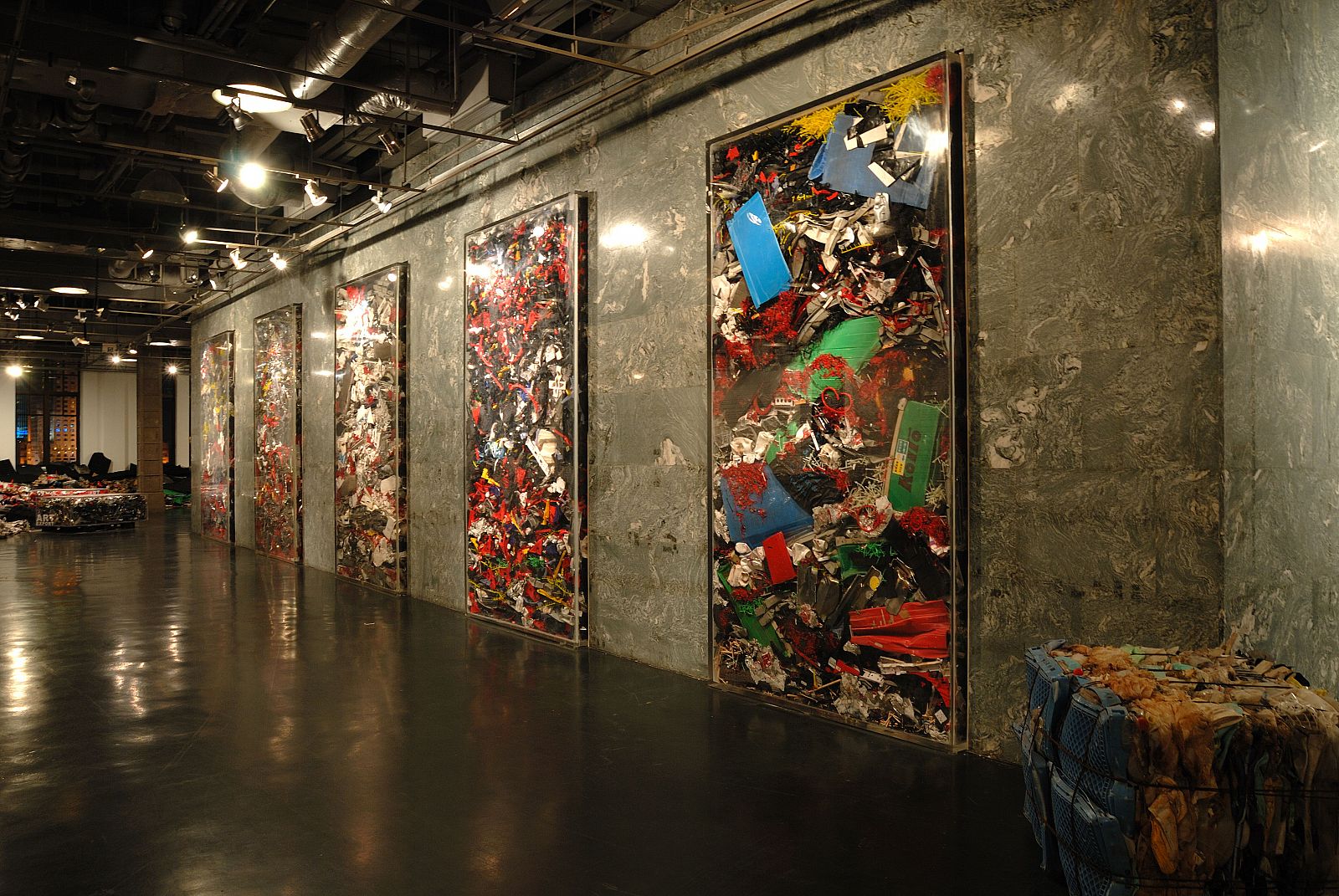I spent January 20th hanging out with a few artists in their studio on the outskirts of Shanghai. In retrospect, our little gathering was something of a watershed. The next day news about COVID-19 started flooding social media, and our conversation revolved around a new exhibition format that had emerged in the past few years: retrospective-to-go.
It all began with a research project about the museum boom in China, which I conducted back in 2017 together with the Polish-born, London-based artist Marysia Lewandowska. Coincidentally, one of our sources for the 2017 project was present at our gathering the night of January 20th, so we ended up screening the fruit of our joint research—Lewandowska’s Rehearsing the Museum (2018). A considerable proportion of the footage was shot in various “surplus” scrap-spaces from the museum boom era—cloakrooms, archives, storage rooms, even 3D models of museums—bypassing, in a way, the usual exhibition content. In recent years, these newly erected museums have been parachuting ready-made blockbuster shows, at times overseen by commercial galleries, with such velocity that one is tempted to compare them with fast food services. Lewandowska’s project seems to be a response to this phenomenon in part, while also alluding to the reality of this construction fever as itself a kind of fiction and speculation. Through a series of rehearsed dialogues, the film explicitly discusses the rise of private art museums and the retrieval of cultural relics from overseas collections amidst the large-scale cultural tourism development projects that followed China’s recovery from the 2008 financial crisis.
Lewandowska and I together interviewed local cultural elites, then had these acted out by two twenty-something Shanghainese women—the main visitors to Chinese private museums, which are known for their soaring ticket prices. In their conversation, the emerging class of museum investors in China is portrayed as a polarized community. They are either beneficiaries of the socialist market economy holding on to a kind of elitist nostalgia for communism and the commons, or they maintain a critical position on unequal power distribution amongst different genders shaped by public opinion. For Lewandowska, both of these approaches have the potential to convert the attention of these investors towards the public domain in the future.
In this respect, Rehearsing the Museum seems like a sequel to Lewandowska’s acclaimed dystopian sci-fi film Museum Futures: Distributed, made in collaboration with Neil Cummings. The earlier work, set in 2058, sees Ms Chan (played by Crystal Yu), a young Chinese female curator and critic based in Guangzhou, remotely interviewing via satellite link chief executive Ayan Lindquist (played by Chipo Chung) of Stockholm’s Moderna Museet. Neologisms, a typical trope of the sci-fi genre, are employed to evoke a slew of fascinating future art-historical scenarios, such as Ecology of Fear (a research exhibition responding to the phenomena of epidemics and wars) and a “public/private museum hybrid" model born in reaction to the debt crisis. As a new type of property investment, a Frieze Art Academy has by then been set up in Beijing. In 2029, the aforementioned Stockholm museum launches a seminal project about general economics at their node in Guangzhou’s museum island—and again, this initiative reveals a tendency for museums to turn to the public domain.
Considering the specialties of art historian-cum-curators—retrospectives—perhaps it is by the pen of science fiction artists that we can get a better sense of future art history. Such a hypothesis was unanimously agreed upon by those present at the gathering in Shanghai that night. Perhaps it is due to the curious sets of oppositions it evokes: speculative fiction vs. retrospective, future chronicles vs. historical writing. What truly distinguishes future art chronicles from its counterpart is its central concern: in the future, who will be the subjects leading the process of propelling history forward?
In Cummings’s and Lewandowska’s take on future art-historical development, other than avant-garde canons of institutional critique such as Group Material, the future is void of the name of any artist-to-come—the stage becoming a perpetual struggle between private capital and cultural administrators. This absence of artists does not seem to come out of nowhere: even today, while it is easy to see how private capital sculpts cultural infrastructure and how the public domain is increasingly powered by emerging technologies while at the same time being depleted of content, it is nearly impossible to imagine someone anyone taking up the role of historical subject through artistic means.
This perfectly explains the mid-life anxiety that permeates the Chinese contemporary art circles today. Prima facie, people seem to be celebrating the local art system’s astonishing rate of growth over the past five years. One can perhaps attribute this entirely to the worldwide notoriety of Chinese collectors active today, some of whom perform dual roles of museum director and curator. Nosy media reports prefer to portray the museum boom as some kind of gold rush, with blue-chip artists as the gold diggers seeking to get their pricey works into the Chinese market. Their enormous bodies of work make it very easy to churn out proposals for retrospectives, and also to guarantee box office success—and thus the new genre, the “retrospective-to-go” was born. Fortunately, many professionals are aware that these are just what Eileen Chang called a “gorgeous robe, infested with fleas,” and privately they all gasp at the proliferation of such exhibitions in the course of a mere decade. These retrospectives-to-go emphasize modularity over content; history is revisited only as needed to set up the social scene of life, while occasionally also helping to catalyze institutional partnerships. A few more serious and sincere institutions have mounted survey shows of the past four decades of Chinese art. But this particular period of history is evidently all too convoluted to be glossed over in haste. As for me, I don’t believe these surveys are really looking for any sort of answer in history; in fact, if there were any artistic movements today capable of propelling history like the ’85 New Wave did, perhaps we wouldn’t be dwelling so relentlessly on the past to begin with.
Back to the point: ever since the first survey in 2007, retrospectives on the ’85 New Wave have become somewhat routine, revisited every now and then. Other art-historical periods have also been endowed with archaeological significance amidst this retrospective fever, as if China’s every tomorrow must be dedicated to a different yesterday (read: “Chine demain pour hier”). However, retracing yesterday’s route seems against the group’s intuition. In the notorious 1989 exhibition at the National Art Museum of China, an extremely marketable icon was printed in all its promotional materials and also installed in the exhibition hall: a “no return” sign, provocatively declaring its present as a historical juncture.
The day after our gathering, immediately after the news of the human-to-human spread of COVID-19 was confirmed, social media was filled with calls for the Chinese public to resist the forgetting of the present. Science fiction author Han Song, hoping to spark the critical consciousness of his circle, posted this on Weibo: “From now on, I will be constantly doing one thing: screenshotting and saving every article in my feed, because they tend to disappear so fast, sometimes even faster than the speed of light…It makes me feel like science fiction is trash.” Han continues, “I don’t think this epidemic will bring anything new to the table for science fiction. What’s going on in Wuhan right now has certainly been written before, even with many matching details. And what use does this have? Probably none of the big shots in the seats of the party in Wuhan have read it. This shows exactly what place science fiction occupies in the public mind: simply trash.”
Han Song’s account of the crisis sets him apart from mainstream Chinese writers. In his self-deprecating tone we hear a refusal of productivism. As Han observes, except for scanty and intermittent attention—always following some social crisis—Chinese-language sci-fi has largely been relegated to the trash bin, as a sort of garbage time. Han ends his statement with an apology for the crash of his “reptilian brain.”1Han Song, “COVID-19 dampens the confidence of Chinese Sci-Fi.” Weibo. Feburary 3, 2020.
It occurs to me that retrospectives-to-go should as well apologize to the art of the future. When everyone’s busy mounting such shows, and therefore believing that the exhibition of history guarantees a higher return than an investment in the present, we ourselves are treating the present as garbage time. Soon enough, in anticipation of the economic recession, today’s retrospectives-to-go will become tomorrow’s trash.
What to do? The London-based Filipino artist Pio Abad has recently replicated a series of artworks that form part of the illegally amassed collection of the former Filipino president Ferdinand Marcos and his wife Imelda. As the replica introduces this collection to the public, some have been surprised to observe that those objects no longer signify wealth. Here, in the new retrospective context, they have taken on a different note—one of profound apology. For the artist, the kernel in this history is precisely the lack of institutional repentance. During his talk in Asian Art Museum of San Francisco, Abad opens with Arjun Appadurai’s pithy quote on “social life of things,” which helps to instrumentalize in crafting his counternarrative. To disenchant the corruption, let us repeat after Appadurai’s spell-like epigram:
Thus, today’s gift is tomorrow’s commodity.
Yesterday’s commodity is tomorrow’s found art object.
Today’s art object is tomorrow’s junk.
And yesterday’s junk is tomorrow’s heirloom.2Asian Art Museum, “Artist Pio Abad on the Collection of Jane Ryan & William Saunders.” YouTube. March 28, 2018.
Translated from the Chinese by Alvin Li.
Zian Chen is a curator and co-editor of Heichi Magazine. He has contributed fiction writing to Future Histories: Mark Dion and Arseny Zhilyaev (Mousse, 2016) and The Two-Sided Lake: Scenarios, Storyboards and Sets from Liverpool Biennial (Liverpool University Press, 2016), and has published A FanThesis on Ray Brassier’s Prometheanism (Salt Projects, 2018). He is the co-curator of Long March Project: Building Code Violations III – Special Economic Zone (Long March Space, Beijing and Times Museum, Guangzhou, 2018), Long March Project: The Deficit Faction (Long March Space, Beijing, 2019), and Planet Marx Reading Club (various locations, 2019).
Alvin Li is a writer, curator, and contributing editor of frieze, based in Shanghai, China.



